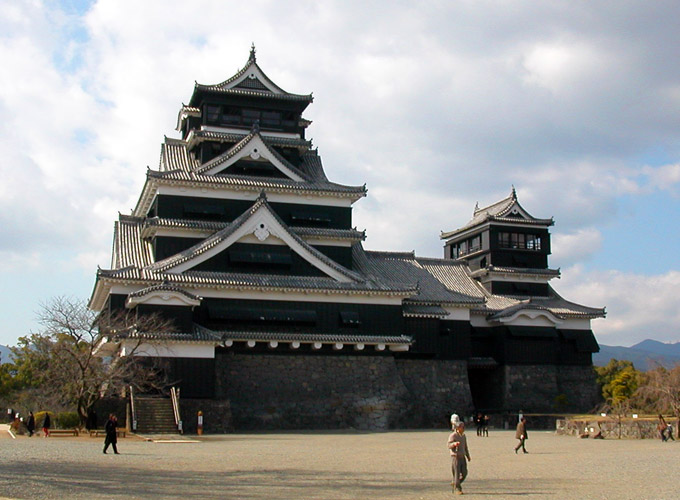| Also
called renketsugata tenshu A^Vç. A castle in which the principle
tower or keep *daitenshu
åVç, and a subsidiary tower or keep *kotenshu
¬Vç, are constructed apart from one another but linked by a crossing parapet
*watariyagura nE.
This connecting parapet, also called hashidai ´ä akes the form of
an earthen bridge with walls along both sides. A roof is sometimes added,
as at Nagoyajou ¼Ã®é (1591),Aichi prefecture. From a defensive point of
view, if the gate to the castle is built into the connecting parapet, enemy
forces approaching the gate could be counter-attacked from the small tower.
|



